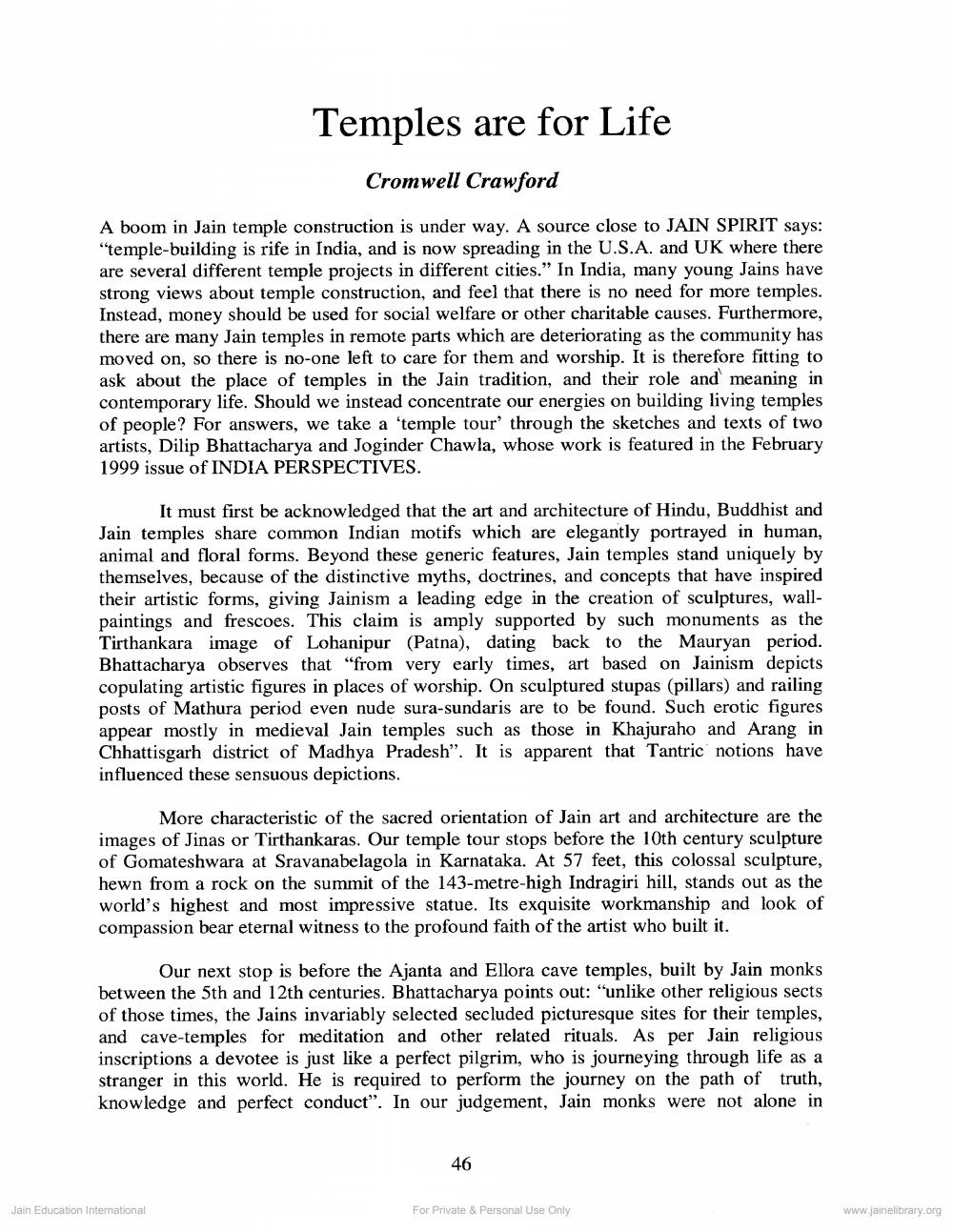________________
Temples are for Life
Cromwell Crawford
A boom in Jain temple construction is under way. A source close to JAIN SPIRIT says: "temple-building is rife in India, and is now spreading in the U.S.A. and UK where there are several different temple projects in different cities." In India, many young Jains have strong views about temple construction, and feel that there is no need for more temples. Instead, money should be used for social welfare or other charitable causes. Furthermore, there are many Jain temples in remote parts which are deteriorating as the community has moved on, so there is no-one left to care for them and worship. It is therefore fitting to ask about the place of temples in the Jain tradition, and their role and meaning in contemporary life. Should we instead concentrate our energies on building living temples of people? For answers, we take a 'temple tour through the sketches and texts of two artists, Dilip Bhattacharya and Joginder Chawla, whose work is featured in the February 1999 issue of INDIA PERSPECTIVES.
It must first be acknowledged that the art and architecture of Hindu, Buddhist and Jain temples share common Indian motifs which are elegantly portrayed in human, animal and floral forms. Beyond these generic features, Jain temples stand uniquely by themselves, because of the distinctive myths, doctrines, and concepts that have inspired their artistic forms, giving Jainism a leading edge in the creation of sculptures, wallpaintings and frescoes. This claim is amply supported by such monuments as the Tirthankara image of Lohanipur (Patna), dating back to the Mauryan period. Bhattacharya observes that "from very early times, art based on Jainism depicts copulating artistic figures in places of worship. On sculptured stupas (pillars) and railing posts of Mathura period even nude sura-sundaris are to be found. Such erotic figures appear mostly in medieval Jain temples such as those in Khajuraho and Arang in Chhattisgarh district of Madhya Pradesh". It is apparent that Tantric notions have influenced these sensuous depictions.
More characteristic of the sacred orientation of Jain art and architecture are the images of Jinas or Tirthankaras. Our temple tour stops before the 10th century sculpture of Gomateshwara at Sravanabelagola in Karnataka. At 57 feet, this colossal sculpture, hewn from a rock on the summit of the 143-metre-high Indragiri hill, stands out as the world's highest and most impressive statue. Its exquisite workmanship and look of compassion bear eternal witness to the profound faith of the artist who built it.
Our next stop is before the Ajanta and Ellora cave temples, built by Jain monks between the 5th and 12th centuries. Bhattacharya points out: "unlike other religious sects of those times, the Jains invariably selected secluded picturesque sites for their temples, and cave-temples for meditation and other related rituals. As per Jain religious inscriptions a devotee is just like a perfect pilgrim, who is journeying through life as a stranger in this world. He is required to perform the journey on the path of truth, knowledge and perfect conduct". In our judgement, Jain monks were not alone in
46
Jain Education Intemational
For Private & Personal Use Only
www.jainelibrary.org




